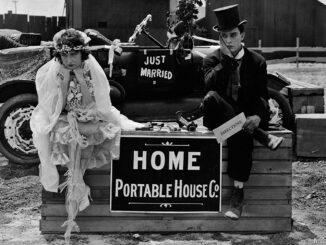
Getting a mortgage is, by general consensus, the most treacherous part of buying a home. Even lenders agree that it’s often a struggle.
“A lot can go wrong,” says Staci Titsworth, regional manager at PNC Mortgage in Pittsburgh.
If you’re out to buy a home, you have to be vigilant. To clue you into the pitfalls, here are six of the most common ways people mess up getting a mortgage.
Waiting until you can make a 20% down payment
A 20% down payment is the golden number when applying for a conventional home loan, since it enables you to avoid paying private mortgage insurance (PMI), an extra monthly fee of 0.3% to 1.15% of your total loan amount.
But with mortgage rates where they are today—in a word, low—waiting for that magic 20% could be a huge mistake, since the more time passes, the higher mortgage rates and home prices may go!

All of which means it may be worth discussing your home-buying prospects with lenders right now.
To get a ballpark figure of what you can afford and how your down payment affects your finances, punch your salary and other numbers into a home affordability calculator.
Meeting with only one mortgage lender
According to the Consumer Financial Protection Bureau, about half of U.S. home buyers only meet with one mortgage lender before signing up for a home loan.
But these borrowers could be missing out in a big way. Why? Because lenders’ offers and interest rates vary, and even nabbing a slightly lower interest rate can save you big bucks over the long haul.
In fact, the CFPB has found that a borrower taking out a 30-year fixed-rate conventional loan can get rates that vary by more than half a percent.
So to make sure you’re getting the best deal possible, meet with at least three mortgage lenders. You’ll want to start your search early (ideally, at least 60 days before you start seriously looking at homes).
When you meet with each lender, get what’s called a good-faith estimate, which breaks down the terms of the mortgage, including the interest rate and fees, so that you can make an apples-to-apples comparison between offers.

Getting pre-qualified rather than pre-approved
Mortgage pre-qualification and mortgage pre-approval may sound alike, but they’re completely different. Pre-qualification entails a basic overview of a borrower’s ability to get a loan. You provide a mortgage lender with information—about your income, assets, debts, and credit—but you don’t need to produce any paperwork to back it up.
In return, you’ll get a rough estimate of what size loan you can afford, but it’s by no means a guarantee that you’ll actually get approved for the loan when you go to buy a home.
Mortgage pre-approval, meanwhile, is an in-depth process that involves a lender running a credit check and verifying your income and assets. Then an underwriter does a preliminary review of your financial portfolio and, if all goes well, issues a letter of pre-approval—a written commitment for financing up to a certain loan amount.
Bottom line? If you’re serious about buying a house, you need to be pre-approved, since many sellers will accept offers only from pre-approved buyers, says Ray Rodriguez, New York City regional mortgage sales manager at TD Bank. Here’s how to start the process of mortgage pre-approval.

Moving money around
To get pre-approved, you have to show you have enough cash in reserves to afford the down payment. (Presenting your mortgage lender with bank statements is the easiest way to do this.)
Nonetheless, your loan still needs to go through underwriting while you’re under contract for your loan to be approved. Because the underwriter will check to see that your finances have remained the same, the last thing you want to do is move money around while you’re in the process of buying a house.
Shifting large amounts of money out or even into your accounts is a huge red flag, says Casey Fleming, mortgage adviser and author of “The Loan Guide: How to Get the Best Possible Mortgage.”
So if you’re in contract for a home, your money should stay put.
Applying for new lines of credit
If you apply for a new credit card or request a credit limit increase a few months before closing, watch out: Credit inquiries ding your credit score by up to five points. So, don’t let the credit inquiries add up.
“Worse than the actual hit on your credit score is any pattern of trying to borrow more money all at once,” says Glenn Phillips, CEO of Lake Homes Realty. Translation: Applying for multiple lines of credit while you’re buying a house can make your mortgage lender think that you’re desperate for money—a signal that could change your mortgage terms or even get you denied altogether, even if you’ve got a closing date on the books.
Changing jobs
Mortgage lenders like to see at least two years of consistent income history when pre-approving a loan. Consequently, changing jobs while you’re under contract on a property can create a big issue in the eyes of an underwriter.
Your best bet? Try to wait until after you’ve closed on your house to change jobs.
If you’re forced to switch before closing, you should alert your loan officer immediately. Depending on the lender, you may simply need to provide a written verification of employment from your new employer that states your job status and income, says Shashank Shekhar, the founder and CEO of Arcus Lending in San Jose, CA.



